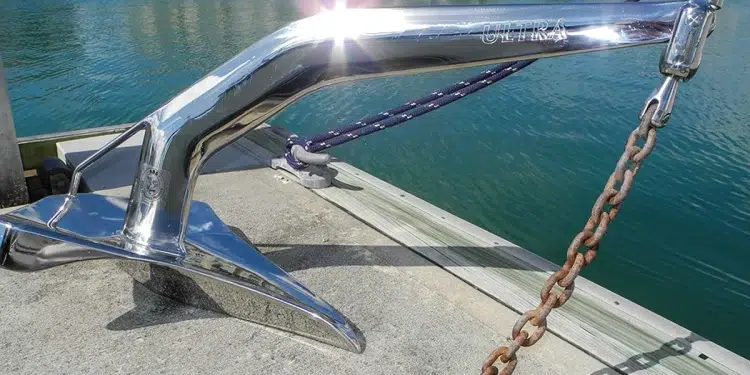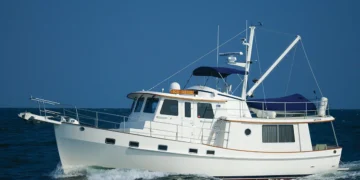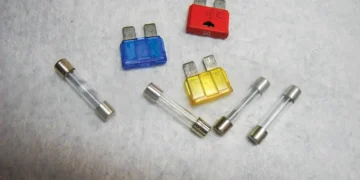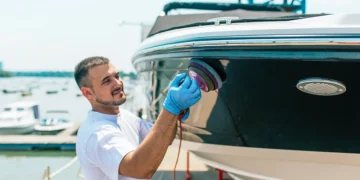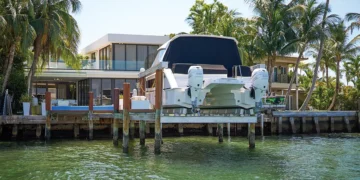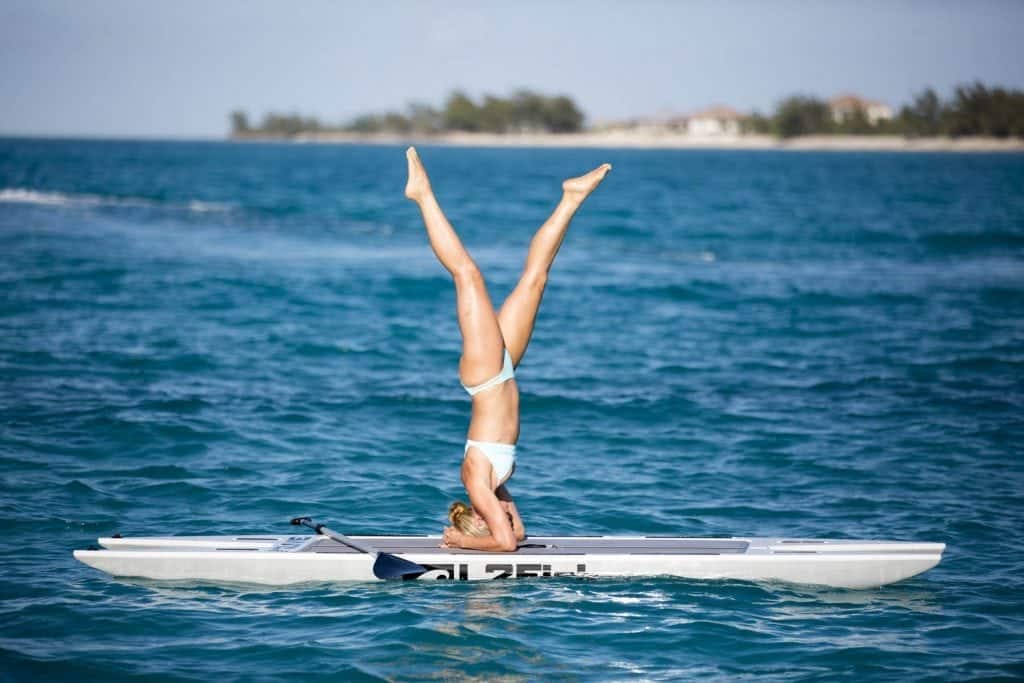Check the entire anchoring system each time you anchor or at the start of the season.
Ground tackle is not fishing gear. It is all the equipment you need to anchor. Many cruising boats have an anchor rode of 100 percent chain or a combination of chain and rope. The rode is the length of rope/chain between the boat and the anchor. Depending upon depth and tide, a significant length of rode could be required to set the anchor securely on the sea floor. Ground tackle is usually found stowed in the bow out of sight in the anchor locker. It’s a great idea to consider the condition and health of this essential piece of safety equipment before you need to set the anchor. So, have you done any maintenance on your ground tackle? Let’s find out how easy this really is.
At the dock, simply deploy all your anchor rode straight down to the bottom of the sea floor in your slip. Watch the rode feed out of the anchor locker and through the windlass chain gypsy. STOP. How much have you deployed? Do you have a measuring system on your anchor rode? Continue feeding out the rode until you reach the bitter end. Hope the rode is secured to the boat to prevent you from losing your ground tackle overboard in an emergency. To be sure, let’s review a few key points.
Where is the Bitter End?
The bitter end is more than just a watering hole in the BVIs. This is the end of the anchor rode and should be secured to the vessel so you do not lose the anchor. Many new boats have the anchor chain shackled to the bitter end in the anchor locker. I think this is a bad idea. If the time comes that you have to release the anchor rode from the boat and it is shackled to the vessel, that shackle pin may be rusted together. A rusted shackled bitter end will not budge or unscrew.
A better idea is to use enough proper diameter rope for the actual connection of your bitter end to the boat. Sufficient rope will allow a connection from the boat and extend above deck so it can be cut free in an emergency. Be sure to have a serrated-edge knife aboard for this purpose. If it’s not an emergency but you just can’t get the anchor lose, secure the anchor rode to a float for later recovery. A few dock fenders should be enough buoyancy to support the chain until a diver can return and free your snagged anchor.
Subscribe Here For Weekly Updates
Mark Your Rode
Another idea is to paint your anchor rode with easily identifiable markings to measure it. Red, white, and blue are unmistakable colors for simple multipliers. Mark a two-foot section with red spray paint at 25 feet, white at 50 feet, and blue at 75 feet. This will be easy to see as the rode deploys and as it is recovered. Mark 100 feet with a two-foot section of yellow paint. When the rode goes overboard you clearly see the colors red, white, blue then yellow. For rodes longer than 100 feet just start over with red, white, blue, and then two sections of yellow for 200 feet.
Inspection and Protection
Hopefully all your anchor rode deployed straight down during your test. But if it’s been a while since you’ve performed any maintenance, the chain might not feed out of the anchor locker easily. Peek in the anchor locker to see why. Wearing eye protection, use a mallet to break up the rusty chain ball resulting from neglect.
While the rode feeds out, inspect all chain links, all connection points, such as shackles and anchor swivels, and don’t forget the bitter end connection to the boat. If the rust is too severe, you may have to cut out the bad links by using a mini grinder with a carbide blade. A hacksaw will not be up to the task of cutting both sides of the chain link nor will a bolt cutter. Remember to wear that eye protection.
Once the bad links have been cut away, consider how much usable chain you still have connected to the anchor. Have at least one boat length of chain connected to the anchor depending on the type of anchoring you plan to do. Splice an anchor rope into the chain to extend the length of the rode. Use a chain-to-rope splice to transition though the windlass easily.
If you have a chain and rope rode, look closely at chain-to-rope splice. The rope will remain wet longer than the chain at the bottom of the anchor locker. So, the actual splice will hold moisture and may cause that chain link to rust. Decide how bad that rust is and if the actual splice should be cut out and replaced.
Preventive Maintenance is Easy
Many boaters only use about half of their anchor rode while the other half just sits piled up in the anchor locker. Every time the anchor is recovered, sea water and mud collects on top of the chain pile already in the locker. The second half of the rode rarely gets exercised, collecting moisture that contributes to more rust and decay. Using a deck wash will help reduce the amount of mud and sand collecting on top of the rode, and a freshwater rinse is beneficial when back at the dock.
Most anchor lockers have a channel for the muddy water to drain overboard. You may notice the small stainless-steel vent near the waterline at the bow. It is a good idea to occasionally deploy the anchor rode at the dock, check the entire length, and then hose out the anchor locker. Remove any debris, such as seaweed, chunks of dirt, and then inspect the bitter end. Make sure the anchor locker drains freely, then slowly recover the anchor rode while hosing it down with freshwater and watch the rode pile up inside the locker. A manageable pyramid of rode will deploy easily without jamming the windlass.
Out of sight, out of mind. Be sure to check the whole anchoring system from the anchor connection to the bitter end and everything in between. Maintain your ground tackle every day you anchor or at the start of every season.
-by Chris Caldwell


